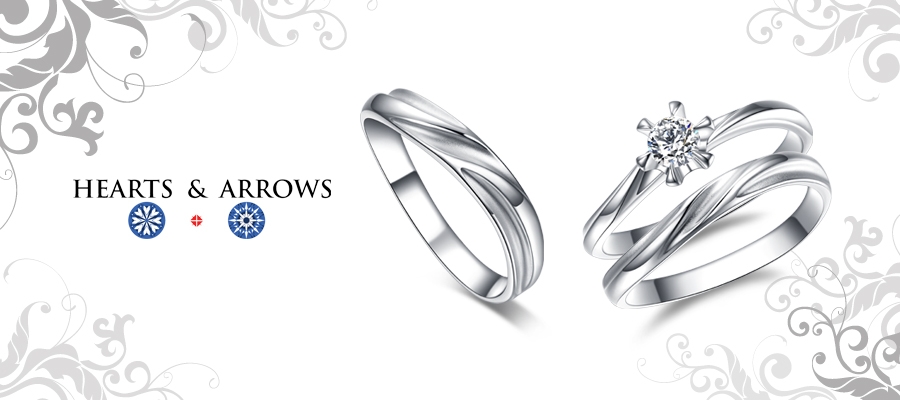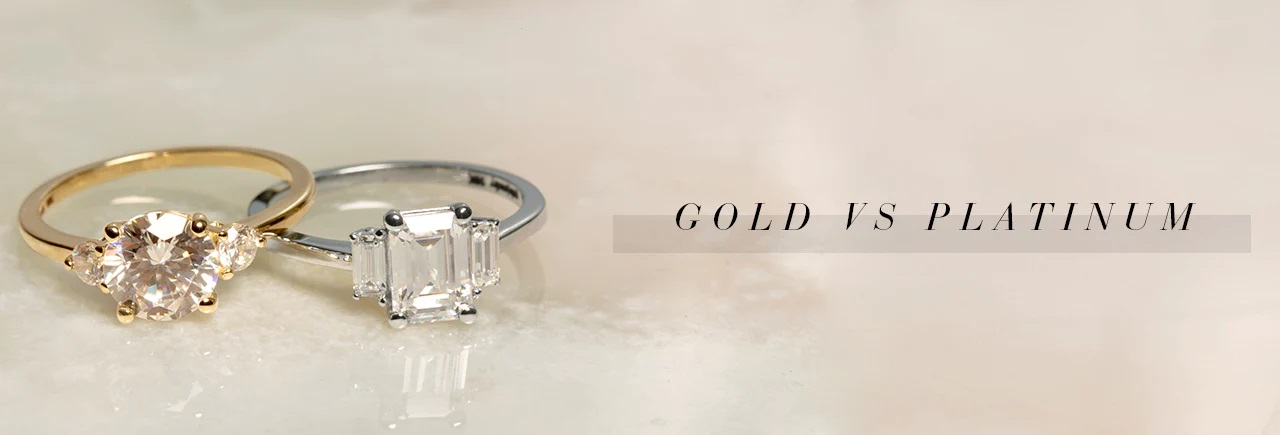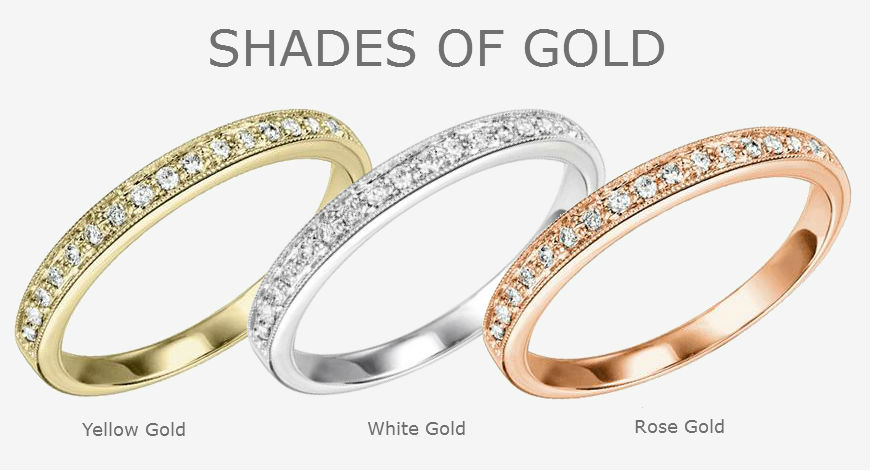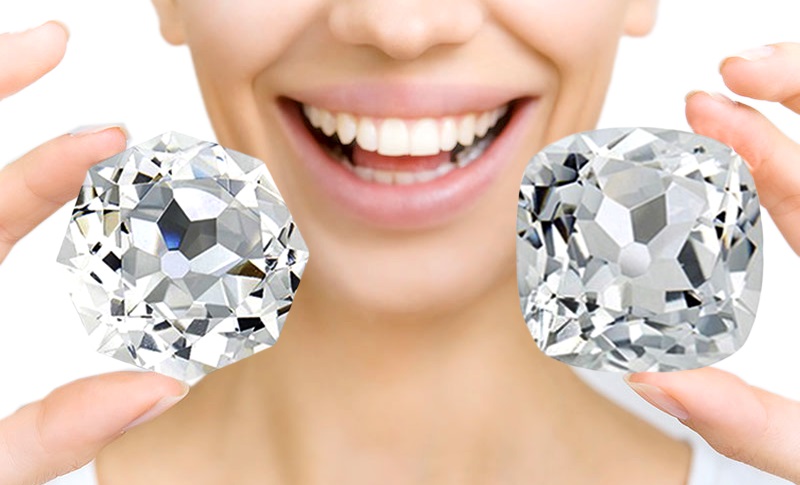What’s the Best Metal for Your Ring?
Selecting the right metal for your ring is a decision that goes beyond aesthetics. It involves considering factors such as durability, lifestyle, personal preferences, and budget. With a plethora of metal options available, each with its own unique attributes, finding the perfect metal for your engagement or wedding ring requires careful consideration. This article delves into the world of ring metals, guiding you through the process of making an informed choice.
Which Type of Ring Metal Should You Choose?
Choosing the right type of ring metal is a decision that involves several considerations, including your lifestyle, personal preferences, skin sensitivities, and budget. Here’s a breakdown of different factors to help guide your choice:

1. Lifestyle: Consider your daily activities and whether you’ll be wearing the ring regularly. If you have an active lifestyle or work with your hands frequently, you might want to opt for a more durable and scratch-resistant metal.
2. Allergies and Sensitivities: Some individuals have allergies or sensitivities to certain metals. If you have experienced reactions to specific metals in the past, it’s important to choose a hypoallergenic metal that won’t cause discomfort or irritation.
3. Durability: If you’re looking for a metal that will stand the test of time and resist scratches and wear, focus on metals known for their durability.
4. Aesthetics: Different metals offer distinct colors and appearances. Consider the aesthetic you’re aiming for – whether you prefer a classic look, a modern feel, or something unique and unconventional.
5. Budget: Your budget will play a significant role in determining the type of metal you can choose. Some metals are more affordable than others due to factors such as rarity and manufacturing costs.
6. Maintenance: Certain metals require more maintenance to keep their appearance. Consider whether you’re willing to commit to regular cleaning and upkeep.
7. Symbolism and Meaning: The metal you choose can hold symbolic meaning. For example, platinum is often associated with endurance and purity, while rose gold is known for its romantic connotations.
Common Ring Metal Options:
1. Platinum: Platinum is a premium choice known for its exceptional durability, hypoallergenic properties, and timeless elegance. It’s a dense and heavy metal with a naturally white color that doesn’t require rhodium plating. However, platinum is also the most expensive option. You can put a diamond on your platinum ring as stated here on diamond vendor reviews.
2. Gold: Gold is a versatile metal available in various colors, including yellow, white, and rose gold. It offers a classic and timeless look. While pure gold is too soft for jewelry, it’s mixed with other metals to create different karat values, each with its own durability and color.
3. White Gold: White gold is created by alloying gold with white metals such as palladium or nickel and is then plated with rhodium for a bright white appearance. It offers a more affordable alternative to platinum while retaining a similar look.
4. Rose Gold: Rose gold has a warm and romantic hue due to the addition of copper in its alloy. It has gained popularity for its unique and trendy appearance.
5. Palladium: Palladium is a lightweight and durable metal with a similar appearance to platinum. It’s hypoallergenic and offers a more budget-friendly option with excellent durability.
6. Titanium and Tungsten: These alternative metals are known for their exceptional strength and durability. They are particularly popular for men’s wedding bands due to their rugged appearance.
7. Silver: Sterling silver is a more affordable option with a classic appearance. However, it’s less durable than other metals and may require more maintenance.
What’s the Most Durable Metal for a Ring?
The most durable metal for a ring is generally considered to be platinum. Platinum is renowned for its exceptional strength, hardness, and resistance to wear and tear. Here’s why platinum is often regarded as the most durable choice for rings:
1. Hardness and Density: Platinum is one of the densest precious metals used in jewelry. Its density contributes to its durability, as it can withstand everyday wear without easily showing signs of damage. This hardness makes platinum particularly well-suited for rings that are worn daily, such as engagement and wedding bands.

2. Scratch Resistance: Platinum’s hardness translates to impressive scratch resistance. While no metal is entirely scratch-proof, platinum’s durability means that it will maintain its polished appearance for a longer time compared to softer metals like gold.
3. Longevity and Wear Resistance: Platinum is known for its ability to maintain its original form and appearance over time. It doesn’t wear down as quickly as other metals, making it a great choice for rings that will be worn for decades, such as wedding bands.
4. Hypoallergenic Properties: Platinum is hypoallergenic, which means it is unlikely to cause skin irritations or allergies. This makes it an excellent choice for individuals with sensitive skin or metal allergies.
5. Weight and Solidity: The weight of platinum adds to its sense of durability and quality. The solid feel of platinum rings contributes to their lasting impression, and many people appreciate the substantial weight as an indication of the metal’s durability.
6. Resistance to Tarnish and Corrosion: Platinum is highly resistant to tarnishing and corrosion, which helps maintain its lustrous appearance over time. This resistance to environmental factors further contributes to its durability.
Metal Choices for the Engagement and Wedding Rings: Engagement and wedding rings are enduring symbols of love and commitment, and the choice of metal can enhance their significance. While platinum and gold remain classics, white gold offers a more affordable alternative with a similar appearance to platinum. Rose gold has gained popularity for its warm and romantic hue, while palladium presents an excellent balance of strength and affordability.
Conclusion
The choice of metal for your ring is a pivotal decision that encompasses factors beyond aesthetics. Your lifestyle, preferences, and budget will guide you toward the ideal metal that suits your individual needs. Whether you prioritize durability, symbolism, or affordability, the vast array of metals available ensures that you can find the perfect match for your engagement or wedding ring. By understanding the unique attributes of each metal, you can make an informed choice that resonates with your personal style and enduring commitment.…
Read MoreHearts and Arrows Diamonds are getting increasingly popular – Here’s why
In the realm of luxury gems, Hearts and Arrows diamonds have emerged as a symbol of exquisite craftsmanship and unparalleled beauty. These meticulously cut gems have gained immense popularity due to their distinct optical phenomenon and exceptional brilliance. This article delves into the world of Hearts and Arrows diamonds, providing an in-depth understanding of their characteristics, significance, and the reasons behind their resounding popularity.
What Are Heart and Arrow Diamonds?
Heart and Arrow diamonds, also known as Hearts and Arrows diamonds or Super Ideal diamonds, are a specific category of round brilliant cut diamonds that exhibit a unique and visually stunning optical pattern. This pattern is characterized by the appearance of perfectly symmetrical arrow shapes visible from the top view and heart shapes visible from the bottom view when the diamond is viewed under specific lighting conditions. Achieving this level of precision and symmetry requires a cutting process that goes beyond the standard requirements for round brilliant diamonds.
The Hearts and Arrows phenomenon is a result of the diamond’s impeccable symmetry and the way light interacts with its facets. The pattern is a reflection of the diamond’s cut quality, with each facet meeting at precise angles and alignments. When light enters the diamond, it undergoes a series of reflections and refractions, creating the striking display of arrows and hearts. This optical effect is particularly visible in diamonds with exceptional cut quality and symmetry.
The process of creating Hearts and Arrows diamonds involves skilled diamond cutters who carefully analyze the diamond’s proportions, facet alignments, and angles. Minor deviations from the optimal measurements can lead to a loss of the pattern’s precision and brilliance. Therefore, the cutting process for Hearts and Arrows diamonds is rigorous and demands an unparalleled level of expertise and attention to detail.
These diamonds are highly sought after for their captivating visual appeal, as the symmetrical patterning adds a layer of complexity to their brilliance, fire, and scintillation. The Hearts and Arrows pattern is considered a mark of superior craftsmanship and reflects the diamond industry’s commitment to achieving the utmost perfection in cut quality.
The Specialness of Heart and Arrow Diamonds: The allure of Hearts and Arrows diamonds lies in their exceptional visual appeal. The symmetrical patterning, visible under specific lighting conditions, adds a unique charm to these diamonds. When light enters a Hearts and Arrows diamond, it reflects internally, creating a remarkable play of light and color. This breathtaking phenomenon showcases the diamond’s ability to disperse light into its spectral colors, producing a dazzling display that captures the viewer’s gaze.
Are Heart and Arrow Diamonds Worth It?
The question of whether Hearts and Arrows diamonds are worth the investment is a common one among prospective buyers. The decision of whether Hearts and Arrows diamonds are worth the investment depends on a variety of factors and is ultimately a personal one. Here are some key points to consider when evaluating whether Heart and Arrow diamonds are worth it:

1. Cut Quality and Beauty: Hearts and Arrows diamonds are known for their exceptional cut quality and exquisite beauty. The precise alignment of facets and symmetrical patterning result in a remarkable play of light, maximizing brilliance, fire, and scintillation. If you value a diamond’s visual impact and appreciate the highest level of craftsmanship, a Hearts and Arrows diamond could be worth the investment.
2. Visual Appeal: The Hearts and Arrows pattern adds a layer of visual intrigue to the diamond. This unique optical phenomenon is both captivating and symbolic of superior cut quality. If the aesthetic appeal and distinctiveness of a diamond are important to you, the Hearts and Arrows pattern might be worth the extra cost.
3. Rarity and Exclusivity: Due to the stringent criteria for achieving the Hearts and Arrows pattern, these diamonds are relatively rare in the market. If owning a gemstone that stands out for its rarity and exclusivity appeals to you, the investment in a Hearts and Arrows diamond could be justified.
4. Personal Preferences and Values: Ultimately, the worth of a Hearts and Arrows diamond is subjective and depends on your personal preferences and values. If you are someone who values the craftsmanship, artistry, and meticulous attention to detail that goes into creating these diamonds, the investment could align with your values.
5. Budget Considerations: It’s important to consider your budget when deciding whether a Hearts and Arrows diamond is worth it. These diamonds often come at a premium due to the complex cutting process required to achieve the pattern. If budget constraints are a concern, you might need to balance the desire for a Hearts and Arrows diamond with other factors.
6. Long-Term Value: While diamonds are not typically bought as financial investments, high-quality diamonds with exceptional cut, such as Hearts and Arrows diamonds, tend to hold their value well over time. If you view your diamond purchase as a potential heirloom or long-term possession, the enduring beauty and quality of a Hearts and Arrows diamond could contribute to its value.
Features of Heart and Arrow Diamonds:
1. Symmetry: The hallmark feature of Hearts and Arrows diamonds is their unparalleled symmetry. Achieving this symmetry requires cutting angles and facet alignments that are exacting and uncompromising, resulting in a harmonious interplay of light.
2. Light Performance: Heart and Arrow diamonds are celebrated for their exceptional light performance. Their precise cut ensures that light entering the diamond is maximally reflected and refracted, creating a mesmerizing display of brilliance, fire, and scintillation.
3. Optical Precision: The intricate patterning of Hearts and Arrows diamonds is a testament to the cutter’s skill and dedication. The alignment of facets and angles is meticulously calculated to produce the desired optical effects.
4. Visual Appeal: The captivating Hearts and Arrows pattern enhances the visual appeal of these diamonds. When observed under proper lighting conditions, the symmetrical arrows and hearts evoke a sense of wonder and fascination.
5. Rareness: Due to the rigorous cutting standards required to create Hearts and Arrows diamonds, they are relatively rare in the market. This rarity contributes to their desirability among collectors and enthusiasts.
Conclusion
In the world of diamonds, Hearts and Arrows gems stand as a testament to the harmonious blend of artistry, precision, and scientific principles. Their unique optical phenomenon and undeniable visual allure have propelled them to the forefront of the diamond market. While the decision to invest in a Hearts and Arrows diamond is a personal one, their exquisite craftsmanship, and exceptional brilliance make them a compelling choice for those seeking a gemstone that transcends mere aesthetics and becomes an embodiment of perfection.…
Read MoreBest Diamond Color for Gold vs Platinum Engagement Rings
Selecting the ideal diamond for an engagement ring involves numerous considerations, including cut, clarity, carat weight, and color. However, a key decision that often takes center stage is the choice between gold and platinum as the metal for the ring. Each metal has distinct characteristics that can influence the appearance of the diamond set within it. In this article, we delve into the intricacies of choosing the right diamond color for gold and platinum engagement rings, exploring the advantages and considerations for both options.
Choosing the Right Diamond Color for Your Gold Engagement Ring
Gold engagement rings are a timeless choice, known for their warmth and elegance. When pairing a diamond with gold, it’s crucial to consider the diamond’s color grade. Since gold has warm undertones, diamonds with slightly lower color grades (around G to J on the GIA color scale) can harmonize well, creating a beautiful contrast. The warmth of gold can mask any faint yellow tones in the diamond, allowing you to select a slightly more affordable option without compromising on aesthetics.
What’s the Best Metal for Your Ring: Gold or Platinum?
Both gold and platinum have their merits as engagement ring metals. Gold, available in various hues including yellow, white, and rose, offers a classic look and a wide array of design options. Platinum, on the other hand, is known for its durability, natural white luster, and hypoallergenic properties. The choice between the two ultimately depends on personal preference and practical considerations.

The Most Popular Diamond Gold Ring and Best Platinum Engagement Rings
For gold engagement rings, the most popular choice is often the classic round brilliant diamond. This cut’s versatility complements the timeless elegance of gold settings. On the platinum side, princess and cushion cuts are highly favored, as the metal’s cool tone enhances the brilliance of these diamond shapes.
Advantages and Disadvantages of Gold and Platinum Diamond Engagement Rings
Gold:
- Advantages: Offers a variety of colors to suit individual preferences. Generally more affordable than platinum. Its malleability allows for intricate designs.
- Disadvantages: Can scratch and wear down over time due to its softness. Requires more maintenance to retain its appearance.
Platinum:
- Advantages: Exceptionally durable and naturally hypoallergenic. Maintains its luster over time without fading. Ideal for those with sensitive skin.
- Disadvantages: Heavier and more expensive compared to gold. May develop a patina over time, which some people find appealing, while others prefer the original luster.
How to Choose the Best Diamond Color for Gold Engagement Rings
Selecting the right diamond color for a gold engagement ring involves considering the interaction between the diamond’s color grade and the warmth of the gold. Here’s a step-by-step guide to help you make the best choice:
1. Understand the Diamond Color Grading Scale: Diamonds are graded on a color scale from D (colorless) to Z (light yellow or brown). The less color a diamond has, the higher its grade. For a gold engagement ring, diamonds in the near-colorless range (G to J) are often recommended.
2. Consider the Gold Hue: Different gold hues (yellow, white, and rose) have distinct interactions with diamond colors. For yellow and rose gold, slightly warmer diamond colors (G to I) can complement the metal’s warmth. For white gold, diamonds with less color (D to F) can enhance the metal’s cool tone.

3. Balance Personal Preference: Ultimately, the choice of diamond color is a matter of personal preference. Some individuals prefer the contrast between a warm diamond and yellow or rose gold, while others lean toward a more traditional and colorless look with white gold.
4. View Diamonds in Various Lighting: Examine diamonds in different lighting conditions to observe how the color appears. Natural daylight and indoor lighting can affect the perceived color of the diamond.
5. Trust Your Eyes: When comparing diamonds of different colors, trust your eyes and choose the one that appears most visually appealing to you. A slight variation in color grade may not be noticeable to the naked eye, especially once the diamond is set in a ring.
How to Choose the Best Platinum Engagement Ring
Choosing the best platinum engagement ring involves considering factors beyond the diamond, as platinum itself is a critical component. Here’s a guide to help you navigate your platinum engagement ring selection:
1. Evaluate Platinum’s Durability: Platinum is a durable metal that’s less prone to wear and tear compared to other metals. Its density ensures that it maintains its structural integrity over time.
2. Consider Your Lifestyle: If you lead an active lifestyle, platinum’s durability can be advantageous. It’s particularly suitable for those who engage in activities that may subject the ring to potential impact or abrasion.
3. Appreciate the Natural Luster: Platinum has a natural white luster that enhances the brilliance of diamonds. This attribute makes it an ideal choice for showcasing the diamond’s brilliance and fire.
4. Factor in Skin Sensitivity: Platinum is hypoallergenic, making it an excellent choice for individuals with sensitive skin. It reduces the risk of allergic reactions or skin irritations.
5. Embrace the Patina: Platinum develops a patina over time due to surface scratches. Some individuals appreciate this aged, matte finish, while others prefer the original high-polish look. Keep your personal preference in mind.
6. Consult with Experts: When selecting a platinum engagement ring, consult with jewelers who specialize in platinum settings. They can guide you on design options and maintenance requirements.
Why Choose a Platinum Engagement Ring?
Platinum’s allure lies in its unmatched durability, making it a symbol of enduring love. Its hypoallergenic properties are a boon for those with sensitive skin, ensuring comfort and longevity. The metal’s white hue enhances the diamond’s brilliance and complements a wide range of styles. If you prioritize longevity, durability, and a timeless appearance, a platinum engagement ring could be the perfect choice.
Conclusion
Selecting the best diamond color for your gold or platinum engagement ring requires a thoughtful balance between personal preference, the diamond’s characteristics, and the metal’s qualities. Whether you opt for the warmth of gold or the enduring elegance of platinum, both choices offer unique advantages that can enhance the beauty of your engagement ring. In the end, the decision is a testament to your individual style and the everlasting commitment the ring represents.
…
Read MoreHatecrimeheartland Presents the Best Diamonds of this Century!
Diamonds, the epitome of beauty, rarity, and everlasting elegance, have captured human fascination for centuries. In the 21st century, these precious gems continue to captivate our attention with their extraordinary size, unparalleled brilliance, and astonishing prices. From historic jewels with legendary stories to contemporary marvels unearthed from deep within the Earth, let’s explore the world of the best diamonds that have graced this century.
The World’s Most Famous Diamonds

1. The Cullinan Diamond: Discovered in 1905, the Cullinan Diamond, the largest gem-quality diamond ever found, continues to hold its place as a paragon of magnificence. This diamond was cut into several stunning gems, some of which adorn the British Crown Jewels.
2. The Hope Diamond: Though not discovered in this century, the Hope Diamond remains a captivating symbol of mystery and allure. With its deep blue color and storied history, this diamond has enthralled generations.
3. The Koh-i-Noor: Another historic diamond that has left an indelible mark is the Koh-i-Noor. Its name means “Mountain of Light,” and it has passed through the hands of various rulers due to its believed mystical powers.
The 10 Most Expensive Diamonds in the World
In recent times, diamonds have fetched astonishing prices at auctions and private sales, reflecting their desirability and investment value. Some of the most expensive diamonds in the world this century include:
1. The Pink Star: A mesmerizing 59.60-carat pink diamond that set a record as the most expensive gem ever sold at auction in 2017.
2. The Oppenheimer Blue: A stunning 14.62-carat blue diamond that attained the title of the most expensive blue diamond ever sold at auction in 2016.
3. The Blue Moon Diamond: This remarkable 12.03-carat blue diamond achieved fame as one of the most expensive diamonds per carat, sold in 2015.
4. The Graff Pink: A vivid pink diamond weighing 24.78 carats that set a record for the most expensive pink diamond ever sold at auction in 2010.
5. The CTF Pink Star: A colossal 59.60-carat pink diamond that gained prominence for being one of the most expensive diamonds ever sold, both at auction and privately.
6. The Winston Pink Legacy: A rare 18.96-carat pink diamond sold by Harry Winston in 2018 for an impressive sum.
7. The Perfect Pink Diamond: A captivating 14.23-carat pink diamond that fetched a substantial price due to its exquisite color and clarity.
8. The Sweet Josephine Diamond: This heart-shaped 16.08-carat pink diamond was named after its current owner’s daughter.
9. The Martian Pink Diamond: A unique purplish-pink diamond that gained attention for its unearthly hue.
10. The Unique Pink Diamond: A fancy vivid pink diamond of 15.38 carats that attained significant recognition for its exceptional color.
The Giants of the Diamond Industry: Exploring the World’s Biggest Diamond Companies
In the fascinating realm of precious gemstones, diamonds reign supreme as timeless symbols of luxury, rarity, and elegance. The diamond industry, marked by its intricate supply chain and global influence, is dominated by a select group of corporations that have carved their way to the top. These companies are responsible for the extraction, trading, and often even the retailing of these precious gems.
1. De Beers Group: A Legacy of Brilliance
Boasting a legacy that spans over a century, the De Beers Group stands as a towering presence in the diamond industry. Founded by Cecil Rhodes, De Beers has played a pivotal role in shaping the diamond market. Operating across the entire diamond pipeline, from mining and exploration to trading and retail, the company’s influence is felt worldwide.

2. ALROSA: Russia’s Diamond Powerhouse
Hailing from the diamond-rich terrains of Russia, ALROSA is renowned as one of the world’s largest producers of rough diamonds. With a vast array of mining operations, the company is a dominant force in the diamond extraction landscape, fueling global demand for these precious stones.
3. Rio Tinto Diamonds: A Multinational Gem
As part of the illustrious Rio Tinto Group, Rio Tinto Diamonds stands at the crossroads of mining, exploration, and marketing. This multinational corporation is instrumental in maintaining a steady flow of diamonds to the market, ensuring a dynamic equilibrium between supply and demand.
4. Petra Diamonds: Crafting Excellence
Petra Diamonds, with its operational presence in multiple African countries, stands out as a noteworthy contributor to the diamond industry. The company’s commitment to excellence and quality has earned it a reputation as a reliable supplier of rough diamonds.
5. Lucara Diamond Corp: Unearthing Exceptional Gems
Lucara Diamond Corp, through its operation of the Karowe Mine in Botswana, has made waves by unearthing exceptional diamonds of unparalleled quality. Their discoveries have not only garnered attention but have also underscored the potential for remarkable finds in even the most established diamond-producing regions.
6. Gem Diamonds: The Pursuit of Rarity
Gem Diamonds, steward of the famed Letšeng diamond mine in Lesotho, specializes in extracting remarkable, high-quality diamonds. Their pursuit of rarity sets them apart in an industry where uniqueness is highly prized.
7. Dominion Diamond Mines: Canadian Excellence
Dominion Diamond Mines, based in Canada, plays a significant role in the global diamond supply chain. With a focus on responsible mining practices, the company contributes to Canada’s status as a respected diamond-producing nation.
8. Mountain Province Diamonds: A Collaborative Approach
In partnership with De Beers, Mountain Province Diamonds contributes to the Gahcho Kué diamond mine in Canada. This collaboration highlights the importance of synergistic efforts in the diamond industry’s complex ecosystem.
10. Stornoway Diamonds: Commitment to Craftsmanship
Stornoway Diamonds, with its Renard Diamond Mine in Canada, embodies a commitment to craftsmanship and ethical diamond sourcing. Their contribution underscores the industry’s shift toward responsible practices.
11. Firestone Diamonds: Shaping the Future
With its operations in Lesotho, Firestone Diamonds actively shapes the diamond industry’s future. Through innovative exploration and mining approaches, the company continues to uncover new possibilities within the diamond landscape.
Conclusion
In the ever-evolving tapestry of the diamond industry, the 21st century has unveiled a dazzling array of exceptional gems that have left an indelible mark on both history and culture. These remarkable diamonds, with their breathtaking beauty and remarkable qualities, have captured the imagination of enthusiasts, collectors, and connoisseurs alike. As we reflect on these best diamonds of the 21st century, we’re reminded that their allure extends beyond their monetary value. They stand as symbols of human ingenuity, resilience, and the enduring fascination with nature’s most exquisite creations. In the years to come, it’s certain that new discoveries will continue to shape the narrative of the diamond industry, perpetuating the timeless allure that only these precious gems can evoke.
…
Read More